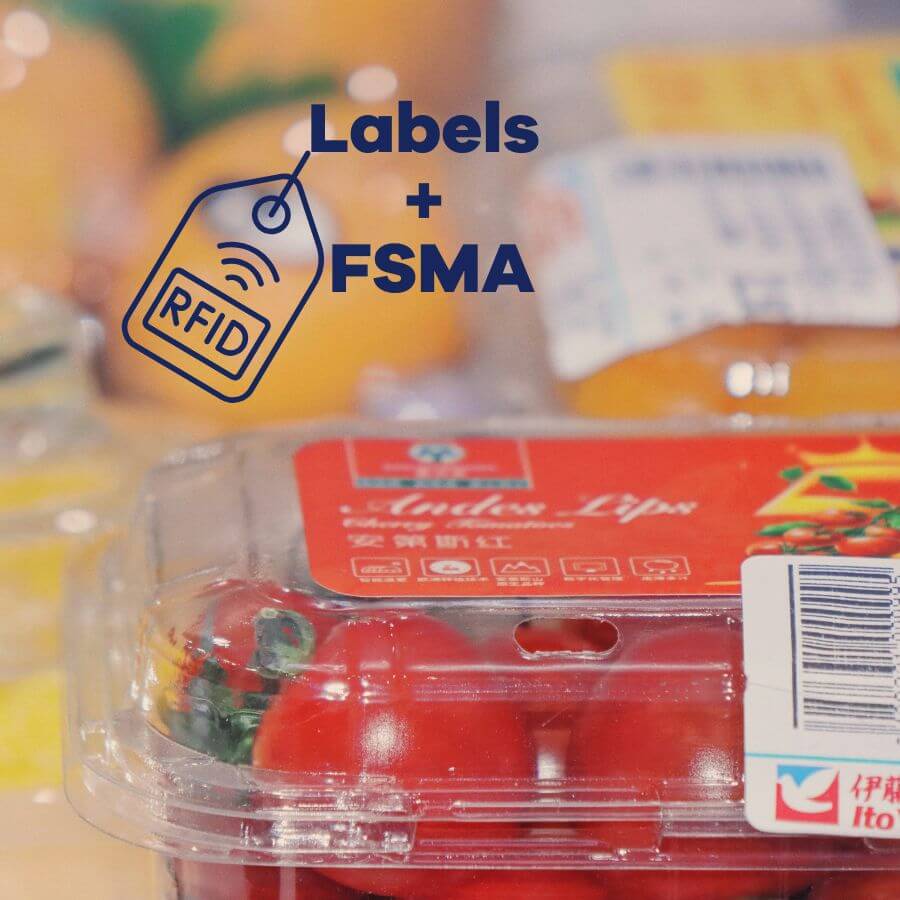Strengthening Traceability with RFID Labels to Meet FSMA
The U.S. Food and Drug Administration (FDA) has taken a major step to enhance food safety with the Food Safety Modernization Act (FSMA). One critical aspect of this is the Food Traceability Final Rule, which mandates more detailed tracking of high-risk foods. The objective is straightforward: enable rapid response to foodborne illness outbreaks by improving traceability across the supply chain.
With a compliance deadline of January 20, 2026, food businesses must evaluate and upgrade how they collect, store, and share product data. A leading technology in this effort is RFID (Radio Frequency Identification), which can play a vital role in meeting FSMA traceability requirements effectively and efficiently.
What Are High-Risk Foods Under FSMA?
The Food Traceability Final Rule focuses on a select group of high-risk foods—items historically linked to more frequent foodborne illness outbreaks. This list, known as the Food Traceability List (FTL), includes products such as leafy greens, tomatoes, shell eggs, soft cheeses, nut butters, seafood, and fresh-cut fruits and vegetables1. These foods require enhanced traceability measures to ensure quick action in the event of contamination or recall.

What Is RFID and Why It Matters for Food Traceability
RFID technology uses labels or tags embedded with electronic data. Unlike traditional barcodes, they are readable wirelessly without a direct line of sight. RFID readers can also scan multiple items simultaneously, improving the speed and accuracy of data collection.
In the food supply chain, RFID labels can be applied to individual items, cases, or pallets. These labels store crucial information such as lot number, harvest date, origin, and shipping details, to name a few. The technology makes it possible to accurately capture the Key Data Elements (KDEs) and Critical Tracking Events (CTEs) required by FSMA. RFID labels make traceability not only more rigorous, but also more automated.
Using RFID Labels to Meet FSMA Traceability Requirements
Here’s how RFID labels help ensure compliance with the FSMA Food Traceability Rule:

Automated Data Capture: RFID eliminates the need for manual entry. Every time an item passes a reader, the system automatically records data like location, time, and status — reducing errors and increasing reliability.
Enhanced Visibility: Real-time tracking enables businesses to monitor product inventory and movement, detect anomalies early, and respond swiftly. This level of visibility is essential for both operational efficiency and regulatory readiness.
Streamlined Recordkeeping: Businesses must produce traceability records within 24 hours of an FDA request. RFID systems make it easier to retrieve and share digital records promptly.
Integration with Existing Systems: RFID platforms integrate easily with systems like Enterprise Resource Planning (ERP), Warehouse Management System (WMS), and Transportation Management System (TMS), ensuring seamless KDE capture without major workflow disruptions.
Targeted Recall Capability: RFID allows pinpoint tracking. Instead of broad recalls, businesses can isolate and remove only the affected products — saving time, money, and reputation.
RFID in Action: Real-World Applications in the Food Industry
Food Sector |
RFID Application |
| Produce | Tracks origin, pesticide use, harvest date, and storage condition from field to distribution. |
| Seafood | Logs catch location, vessel ID, and processing steps to ensure transparency. |
| Dairy & Cheese | Monitors batch numbers, aging times, and cold chain integrity on cheese wheels or milk containers from producer to retailer. |
| Retail & Foodservice | Enables real-time inventory tracking, cold storage monitoring, and supplier verification in supermarkets and restaurants. |
FSMA Food Traceability Rule: Timeline & Deadlines
The FDA finalized the Food Traceability Rule on November 15, 2022. Companies must comply by January 20, 2026, providing ample time to implement RFID and other traceability technologies.

Key steps include:
- Conducting traceability gap assessments
- Upgrading infrastructure
- Testing RFID labels in various environments (wet, frozen, etc.)
- Training staff and adjusting workflows
- Integrating RFID with internal systems
Early planning is essential to avoid bottlenecks, ensure a smooth transition and reduce the risk of non-compliance penalties down the road.
Implementation Challenges & Strategic Considerations
Implementing RFID technology to meet FSMA traceability requirements comes with its share of challenges. Businesses may need to upgrade infrastructure, train staff, and integrate new systems with existing platforms. While these steps require time and investment, the long-term payoff is substantial. RFID labels enable more precise, targeted recalls reducing the need for wide-scale product removal and minimizing waste. They also cut down on manual labor by automating data capture, leading to operational efficiencies and lower labor costs. When viewed through the lens of improved food safety, streamlined compliance, and potential cost savings, RFID emerges as a smart, future-ready investment for any business navigating FSMA regulations.
Final Thoughts: RFID Labels as a Path to FSMA Success
As traceability becomes a cornerstone of modern food safety, using RFID labels to meet FSMA traceability requirements is more than a compliance strategy — it’s a smart, scalable solution for the future. RFID not only meets regulatory needs but also enhances operational agility, customer trust, and overall supply chain resilience.
(1) List provided for reference only. For complete information, please consult the FDA’s Food Traceability List.


